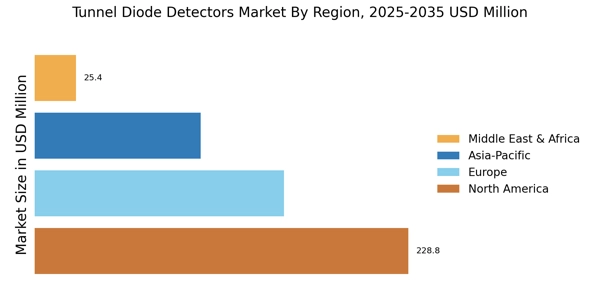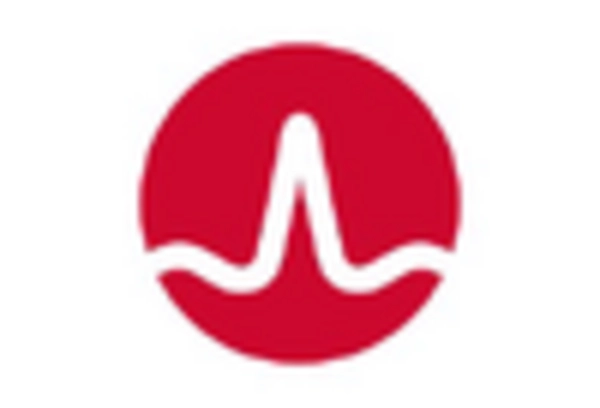Focus on Miniaturization
The trend towards miniaturization in electronic devices is a significant driver for the Tunnel Diode Detectors Market. As consumer electronics become smaller and more compact, the demand for miniaturized components, including tunnel diode detectors, is increasing. This trend is particularly evident in portable devices such as smartphones, wearables, and IoT devices, where space is at a premium. Manufacturers are focusing on developing smaller, more efficient detectors that can fit into these compact designs without compromising performance. The market for miniaturized electronic components is expected to grow, with estimates suggesting a CAGR of around 10% in the coming years. This shift towards smaller devices is likely to enhance the adoption of tunnel diode detectors, as they offer high sensitivity and fast response times, making them ideal for modern applications.
Growing Demand in Telecommunications
The demand for tunnel diode detectors is significantly influenced by the telecommunications sector, which is undergoing rapid expansion. The Tunnel Diode Detectors Market is witnessing increased adoption of these detectors in high-frequency applications, such as microwave and millimeter-wave communications. The rise of 5G technology is a key driver, as it necessitates the use of high-performance detectors to ensure efficient signal processing and transmission. Market analysis indicates that the telecommunications segment accounts for a substantial share of the overall market, with projections suggesting it could reach USD 300 million by 2026. This growth is attributed to the need for reliable and fast communication systems, which are essential for both consumer and industrial applications. As the telecommunications infrastructure continues to evolve, the reliance on tunnel diode detectors is expected to grow, further solidifying their role in this industry.
Rising Applications in Medical Devices
The Tunnel Diode Detectors Market is also benefiting from the increasing applications of tunnel diode detectors in medical devices. These detectors are being utilized in various medical imaging technologies, such as MRI and PET scans, where high sensitivity and rapid response times are crucial. The demand for advanced medical diagnostic tools is on the rise, driven by an aging population and the need for early disease detection. Market Research Future indicates that the medical devices segment is expected to grow significantly, potentially reaching USD 200 million by 2027. This growth is attributed to the ongoing advancements in medical technology and the increasing focus on precision medicine. As healthcare providers seek to improve diagnostic accuracy and patient outcomes, the role of tunnel diode detectors in medical applications is likely to expand, further driving market growth.
Technological Advancements in Electronics
The Tunnel Diode Detectors Market is experiencing a surge in technological advancements, particularly in semiconductor technology. Innovations in materials and fabrication techniques are enhancing the performance and efficiency of tunnel diode detectors. For instance, the integration of advanced materials such as graphene and other two-dimensional materials is likely to improve the sensitivity and speed of these detectors. As a result, the market is projected to grow at a compound annual growth rate (CAGR) of approximately 8% over the next five years. This growth is driven by the increasing need for high-speed data transmission and processing in various applications, including telecommunications and medical devices. The continuous evolution of electronic components is expected to further propel the demand for tunnel diode detectors, making them a critical component in modern electronic systems.
Increased Investment in Research and Development
Investment in research and development (R&D) is a critical driver for the Tunnel Diode Detectors Market. Companies are increasingly allocating resources to innovate and enhance the performance of tunnel diode detectors. This focus on R&D is essential for developing next-generation detectors that can meet the evolving demands of various industries, including telecommunications, medical, and consumer electronics. The market is witnessing a trend where organizations collaborate with research institutions to explore new materials and technologies that can improve detector efficiency and functionality. It is estimated that R&D spending in the semiconductor sector could reach USD 50 billion by 2025, indicating a strong commitment to innovation. This investment is likely to yield advancements that will not only enhance the capabilities of tunnel diode detectors but also expand their applications across different sectors.
















Leave a Comment